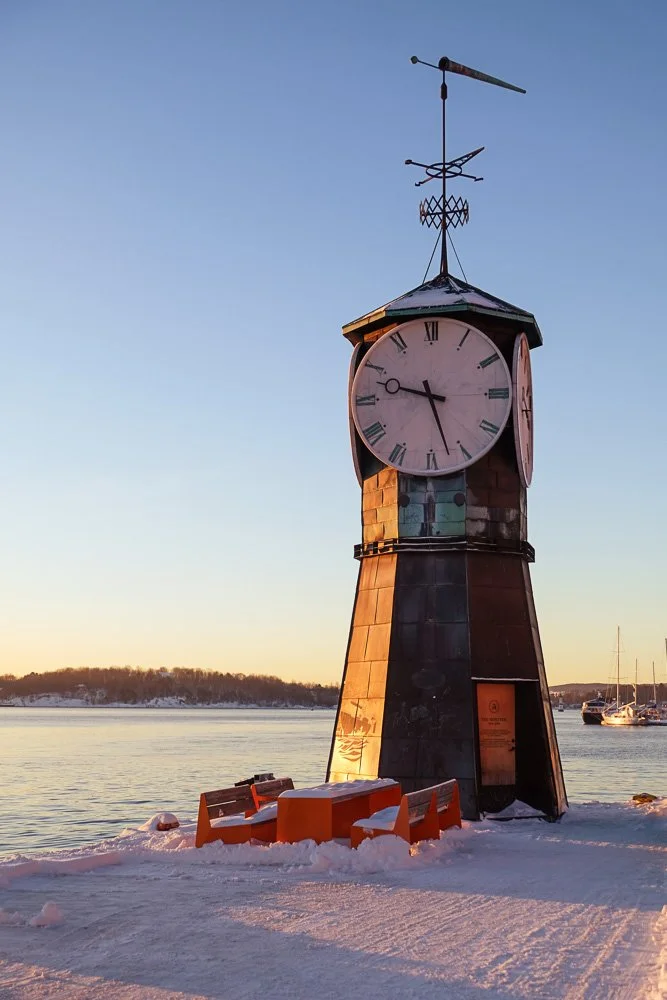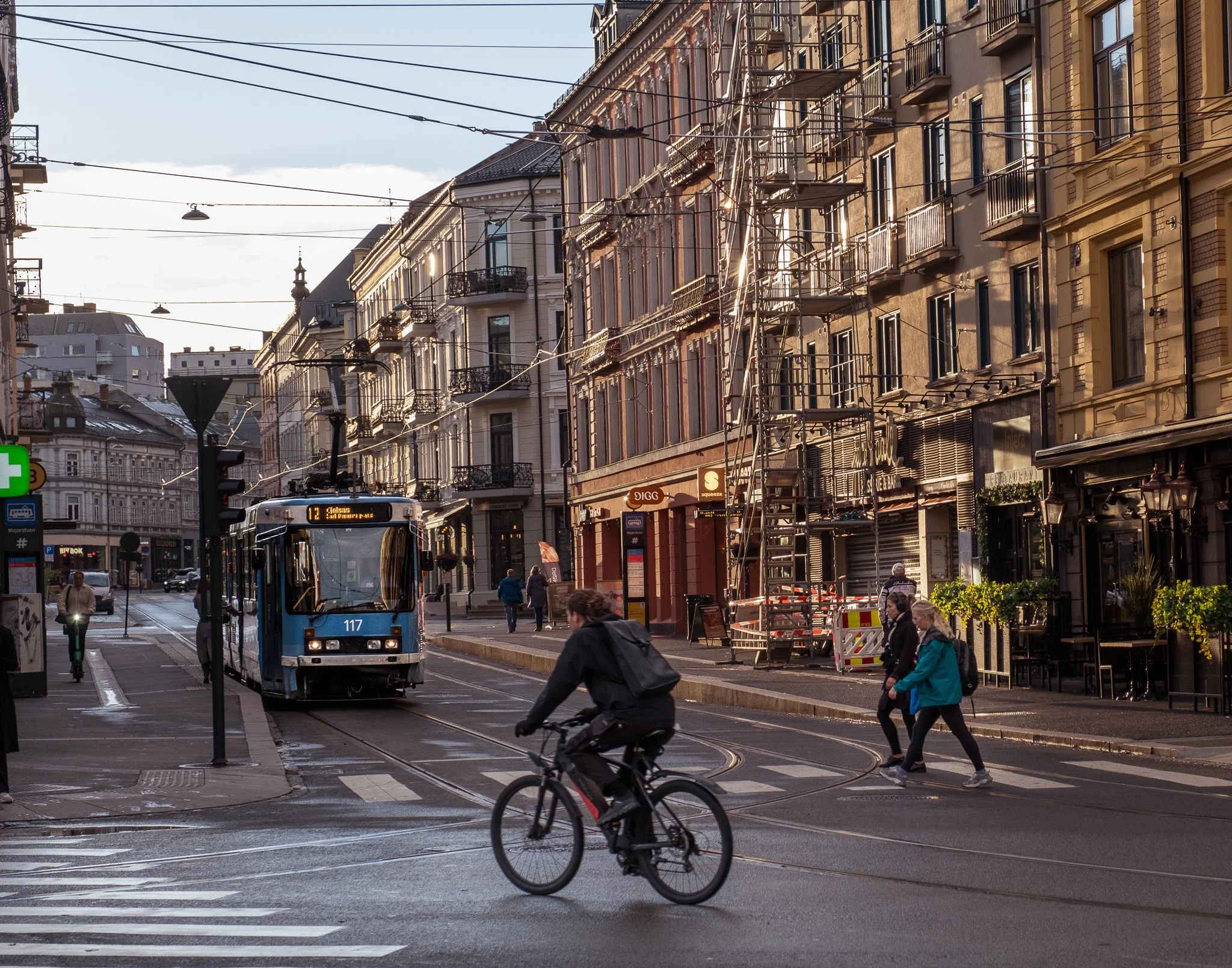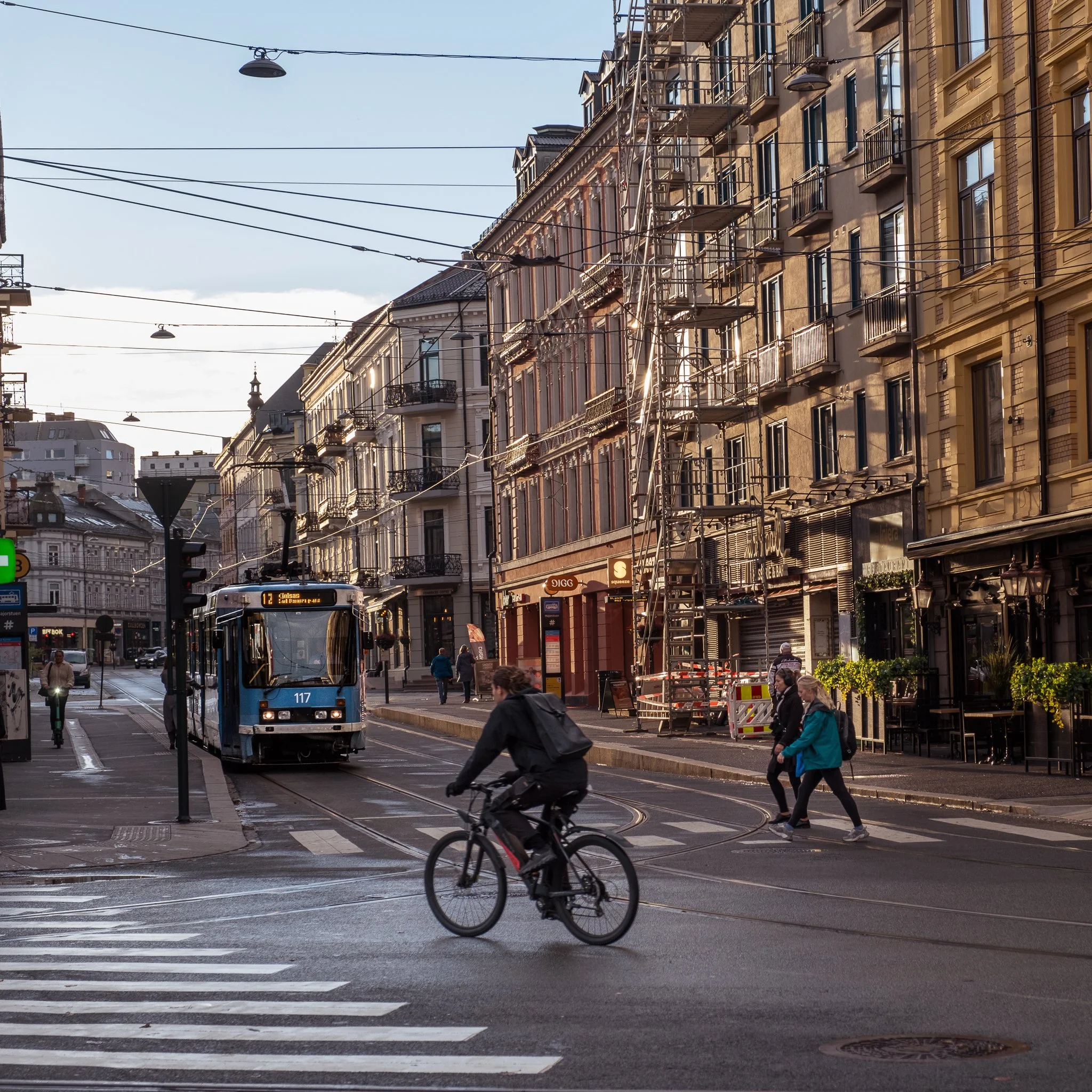Frogner
Oslo, Norway
A tram stops along Majorstuveien as a cyclist, and people cross the intersection along Kirkeveien. The ornamental neo-classical facades of the low-rise tenement buildings from the end of the 19th century lining the street are characteristic of the area's residential blocks. The Majorstua neighbourhood and main street arterials of Bogstadveien and Hegdehaugsveien have a rich street life around dining, shopping, and workplaces.
Majorstuen is one of Oslo's busiest metro stations and is a hub for transit options throughout the city. The #12 Tram to Kjelsås is one of three lines terminating at Majorstuen.
Frogner
Frogner is in the inner city west, from Aker Brygge to the Frogner River and inclusive of the Bygdøy peninsula.
The Frogner district possesses Oslo's most prominent public park and one of Oslo's most popular recreational areas for people across the city. Frogner, In addition to its famous sculpture park, presents an ensemble of attractions with green open spaces, inviting picnic spots, jogging trails, a swimming pool complex in summer and a skating rink in the winter. The district and park are named after the Frogner Manor; today, the building is part of the Oslo Museum.
Sparsely populated until the mid-1890s, The area was developed as a residential area favoured by the upper classes. Many large villas now serve as embassies and residences for diplomatic missions. The district continues to be an affluent area of Oslo. Historic residential blocks with inner courtyards were built between the late 19th and early 20th centuries; four and five-story apartment blocks with varying, often classical detailing unified by proportions and regulation of facades with sympathetic fenestration and proportion and a variation in detailing, colour and styles.
Neighbourhoods in Frogner, such as those around Bogstadveien central business district, exemplify the notion of a "complete neighbourhood" with convenient access to the goods and services required for daily life, a variety of housing, commercial activities, and public spaces along the thoroughfare. New boutiques and modern brands are housed in historic buildings whose facades have largely been retained.
In the district's southwest, the Bygdøy peninsula is connected to the city centre by a short ferry journey. Bygdøy has several public beaches and is a popular recreational area with a sailing club and a network of paths used all year round. The area offers a nexus of cultural institutions, including The Viking Ship Museum, the Kon-Tiki Museum, the Norwegian Maritime Museum, and the Norwegian Folk Museum. The royal estate of Bygdøy Kongsgård and the summer palace, Oscarshall Palace, are also here.




































